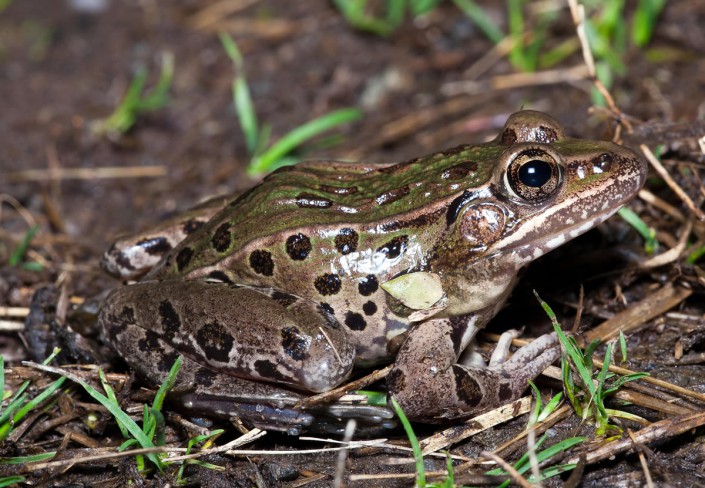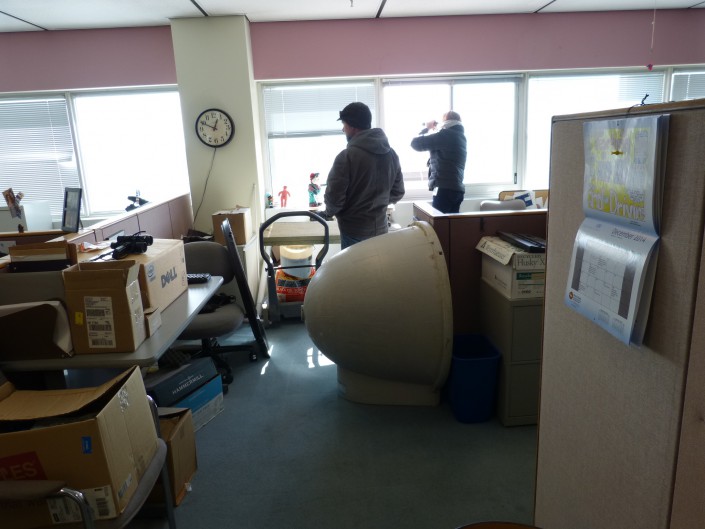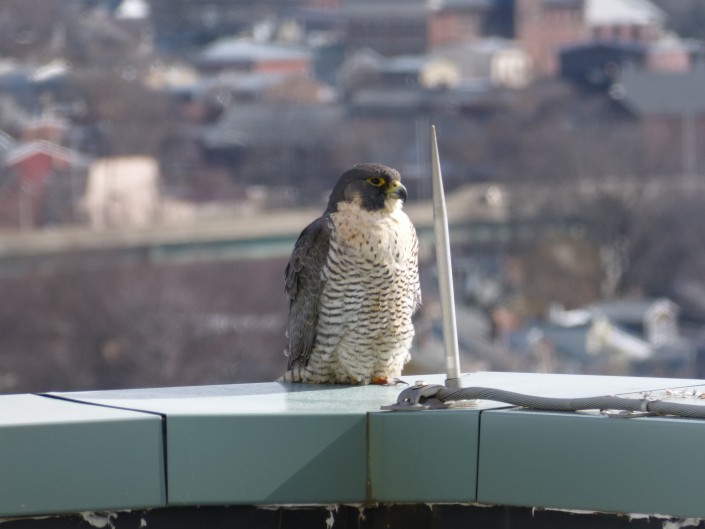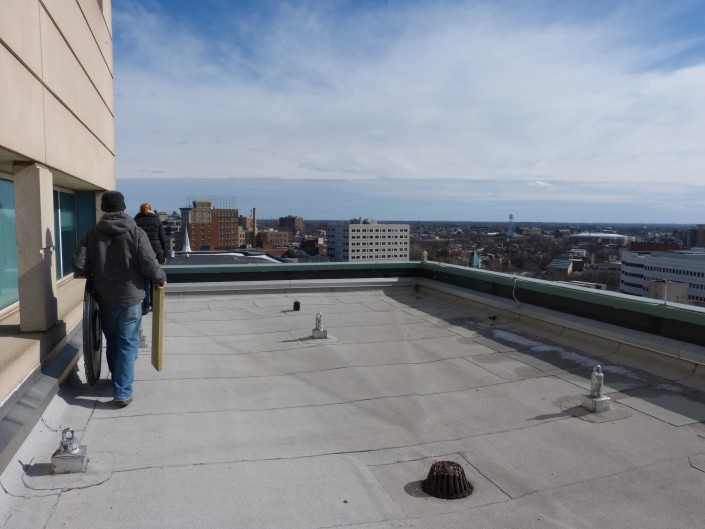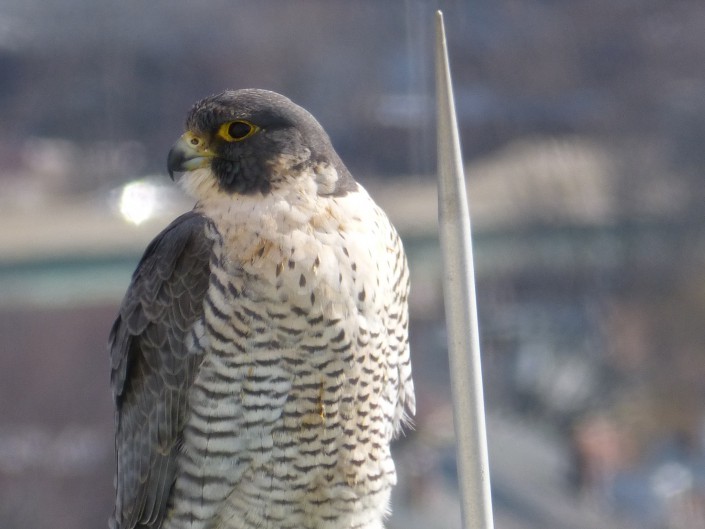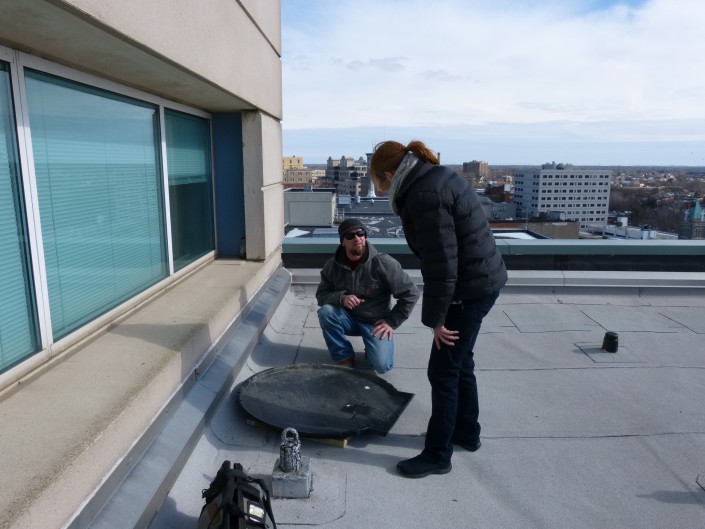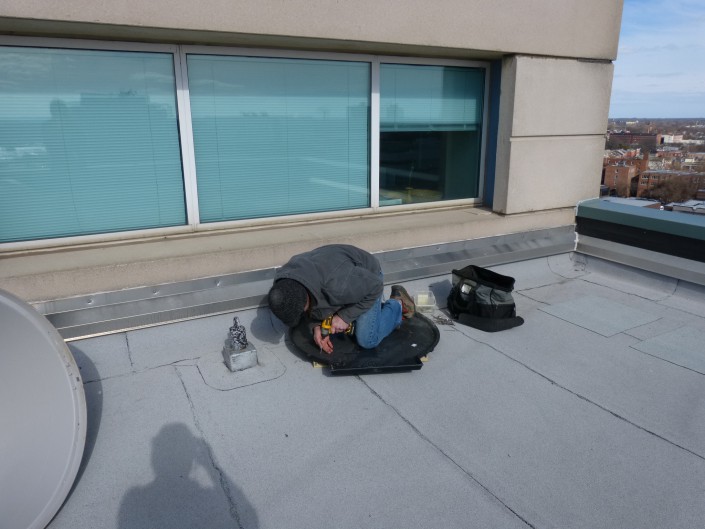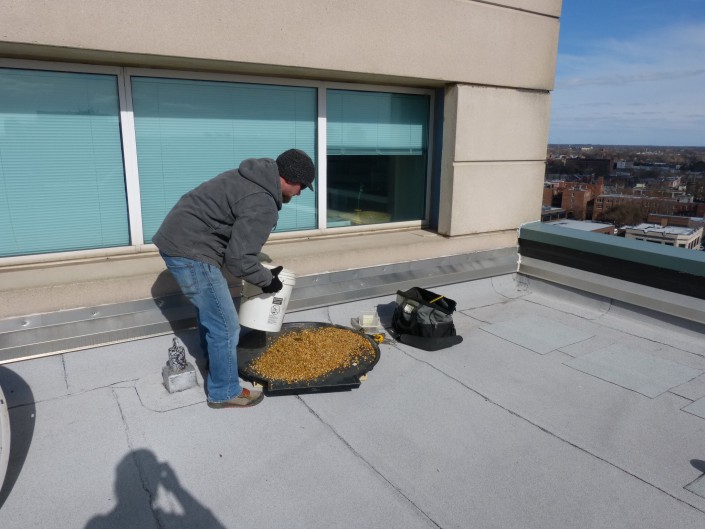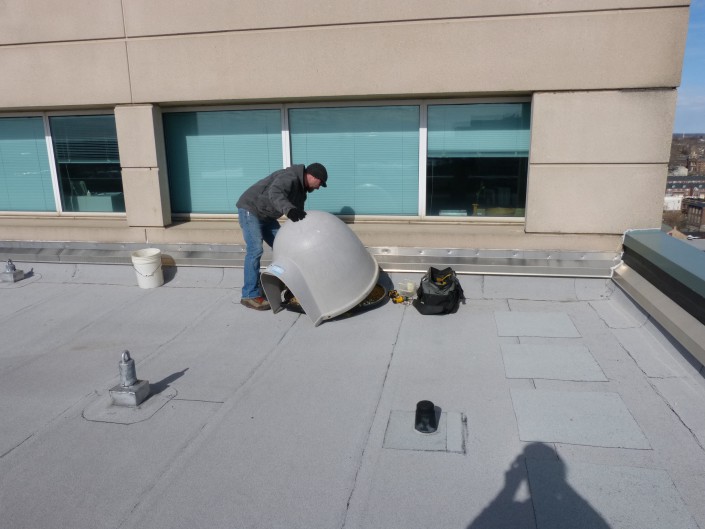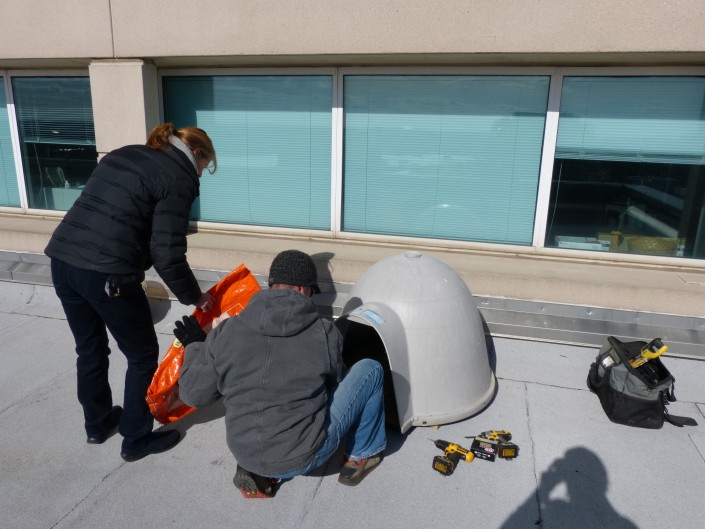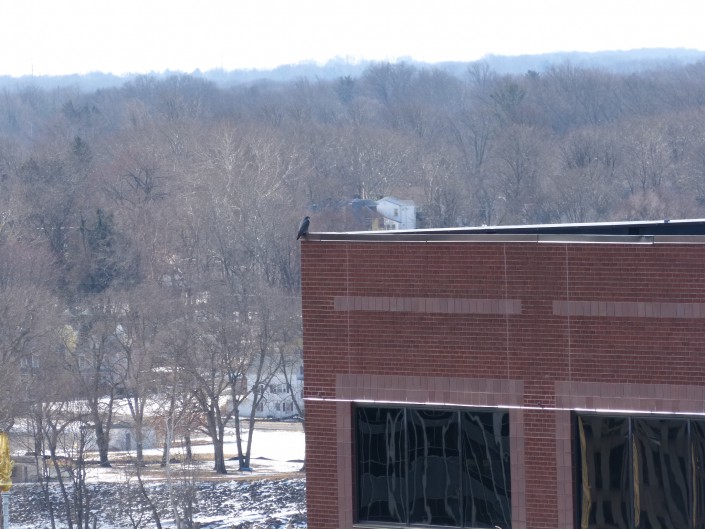New Jersey’s Elusive and Endangered “Tiger”
Studying the New Jersey Endangered Eastern Tiger Salamander
Conserve Wildlife Foundation is excited to celebrate Amphibian Awareness Month during March 2015! Follow us on social media and be sure to check your email (sign up for our list) for weekly stories on the amphibians of the Garden State and our work to protect them.
By: Larissa Smith, Wildlife Biologist/Volunteer Manager
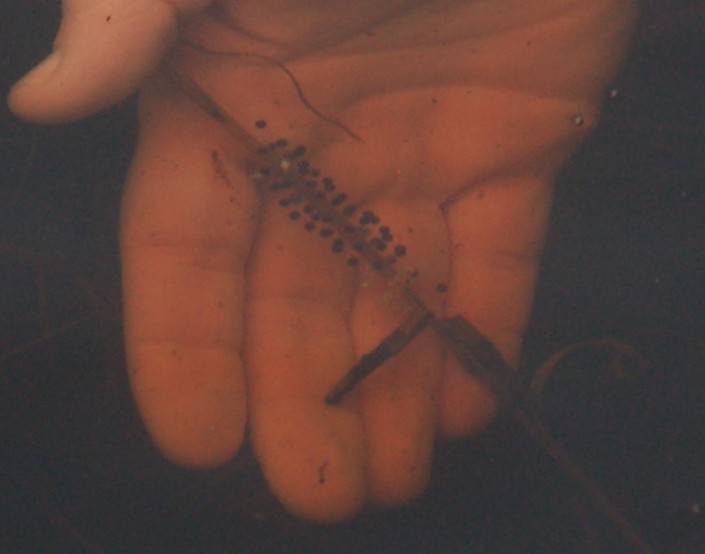
This week, Conserve Wildlife Foundation, New Jersey Division of Fish & Wildlife Endangered and Nongame Species Program (ENSP), U.S. Fish and Wildlife Service biologists and dedicated trained volunteers surveyed a known Eastern Tiger Salamander breeding vernal pool complex. Tiger Salamanders emerge from their underground burrows in the early winter to breed and lay egg masses in the pools. By March, the adults have returned to their burrows.
Biologists and volunteers go out to pools during the winter months to survey for egg masses to determine if the pools are being used by Tiger Salamanders. The cold winter made getting out to pools difficult due to the ice cover, so now that it is warming up we hoped to still be able to find egg masses that hadn’t yet hatched.

One hundred sixty egg masses were found in the largest pool, some the of eggs had already hatched but others were still intact. Tiger Salamander larvae was seen along with the larvae of the Marbled Salamander. Vernal pools are breeding grounds for many species which is why it is so important to protect them.
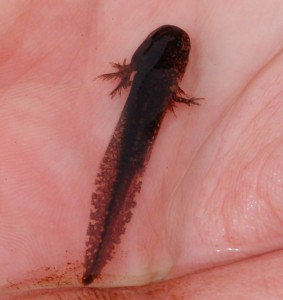
In New Jersey, there are only 15 known Tiger Salamander breeding pools in the southern most part of the state. Tiger Salamanders themselves are targeted by collectors for the pet trade which is why their breeding locations are kept a secret. Their habitat is declining due to habitat loss and fragmentation, development, pollution, changes in hydrology, and climate change.
To see what biologists are doing to protect them visit:
- Conserve Wildlife Foundation’s Online Field Guide: Eastern Tiger Salamander
- Conserve Wildlife Foundation’s Blog: Protecting Eastern Tiger Salamanders in New Jersey
- Conserve Wildlife Foundation’s Blog: Photo from the Field
- Conserve Wildlife Foundation’s Blog: Planting for Butterflies
Larissa Smith is a Wildlife Biologist and the Volunteer Manager for Conserve Wildlife Foundation of New Jersey.
